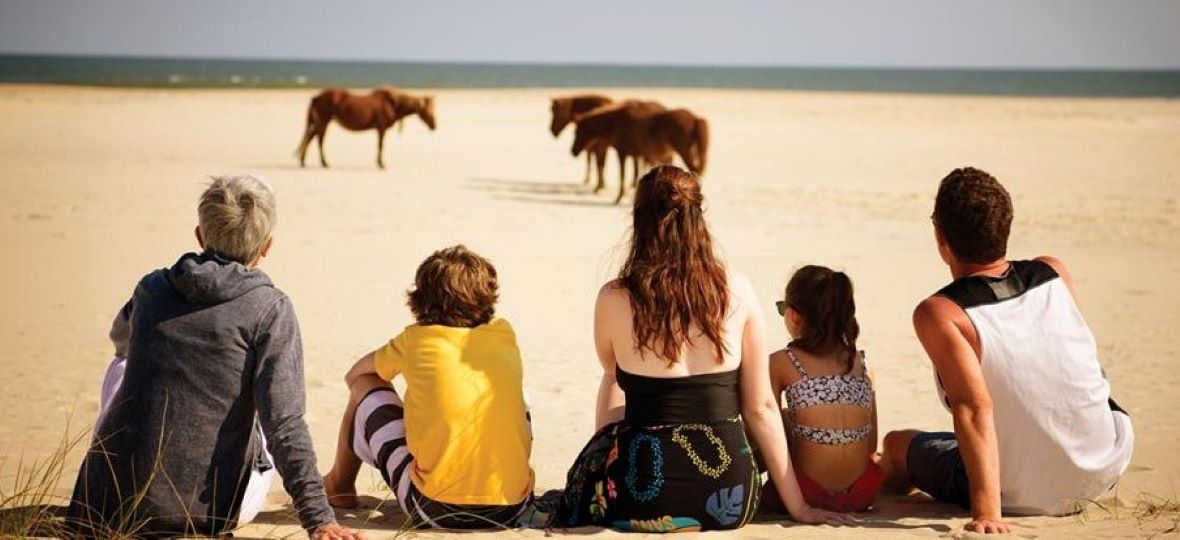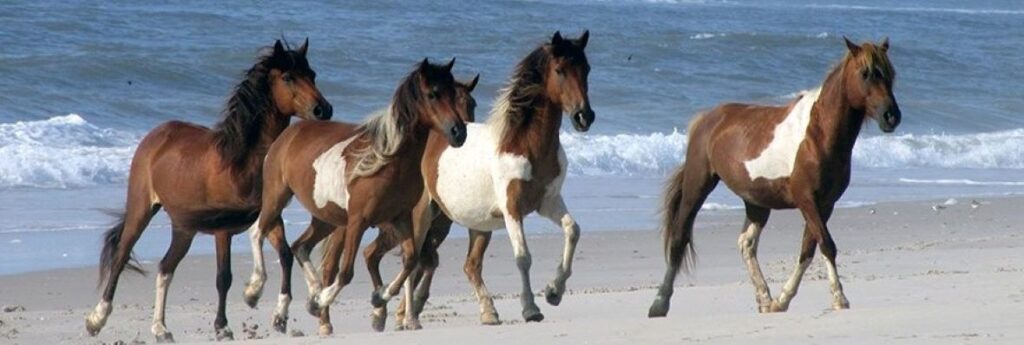There’s more to Maryland’s scenic seaside than sand and shells. Lucky visitors to the state’s shores, on Assateague at least, have a good chance to meet some of the island’s famous wild horses.
The pack of ponies are actually feral animals – descendants of domestic animals that have reverted to a wild state – and local folklore tells that the majestic creatures survived a shipwreck off the Virginia coast, some even suggesting that pirates were involved.
However, a more plausible explanation is that they are the descendants of horses that were brought to barrier islands like Assateague in the late 17th century by mainland owners to avoid fencing laws and taxation of livestock.
Today, the horses are tough enough to survive scorching heat, stormy weather and poor-quality food found on the remote, windswept barrier island, not to mention abundant mosquitoes, and have formed a unique wild horse society.
About 75 horses roam freely across the island and are managed by the National Park Service, which limits the size of the herd (to 150 animals) to help protect the other natural resources on the island. And a related herd – known as the “Chincoteague” ponies – can also be found in neighbouring Virginia, separated by a fence at the state line.

Maryland officials note that Assateague is one of the few places in the US to see wild horses, but warn visitors that they are not tame and can exhibit unpredictable behaviour; as such, a people are advised to stay “a bus length” away and to refrain from feeding or petting them – a form of social distancing that also protects the animals.
Moreover, it gives “the horses the space they need to be wild,” thereby ensuring that Assateague remains a precious place, for residents and visitors alike.
Assateague Island is located 13 kilometres south of Ocean City, Maryland, and about a four-hour drive from Baltimore and Washington DC. The 60-km long island (two thirds of it in Maryland) is the largest barrier island in the mid-Atlantic region and part of the Assateague Island National Seashore, which allows such activities include beach and trail walking, swimming, surfing, wildlife viewing, birding, crabbing, fishing and kayaking.

